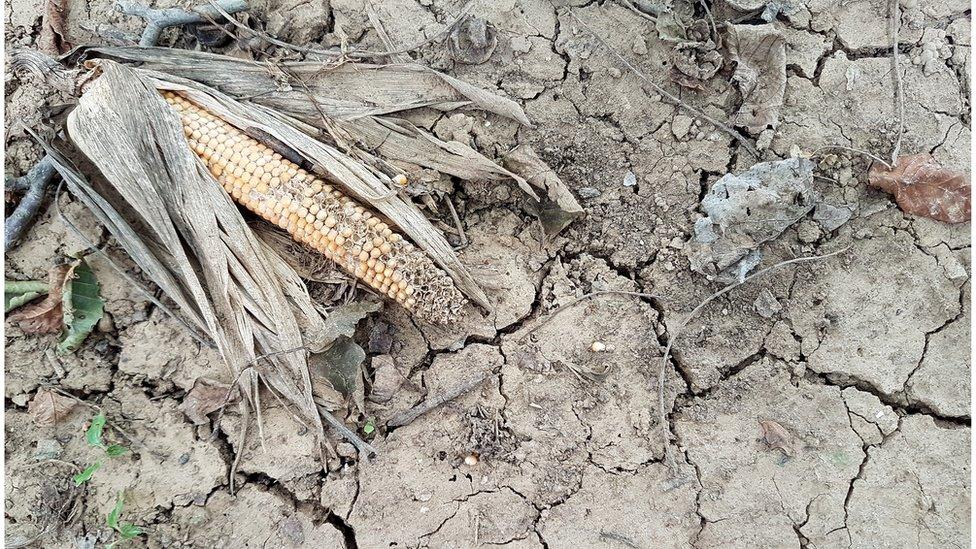Higher temperatures linked to EU asylum figures
- Published

High temperatures that have impacted maize production have been linked to increases in numbers of EU asylum seekers
Sharp increases in the numbers of those seeking asylum in the European Union have been linked to higher temperatures in agricultural regions of the world.
Researchers found that when temperatures deviated from 20C in food growing areas of 103 countries, more people sought refuge abroad.
Around 660,000 extra applicants would be expected each year by 2100, the authors say, if current temperature trends continue.
The Science journal.
Between 2000 and 2014, around 350,000 people applied for asylum in the European Union every year. The majority came from countries such as Afghanistan and Iraq.
In this study, researchers examine these numbers and assess the role of what they call "weather shocks" in pushing people to seek asylum. The authors find that the numbers increase if the temperatures in the 103 countries they looked at were too warm or too cold. Warmer temperatures, defined as being above 20C, were seen as having a bigger impact.
The researchers found "a highly statistically significant relationship" between the number of asylum applications logged by the EU and average temperatures in the maize growing regions in countries like Pakistan.
The report suggests that if current temperature trends continue there will be a significant rise in asylum seekers by the end of this century
The authors believe that too much heat especially, depresses yields, damages national GDP and increases aggressive behaviours. The study also found that the weather-induced spikes in applications translated into roughly three times higher acceptance rates by the EU in the two years following an event.
"I feel very confident that what we discovered for 2000-2014 is a causal relationship between weather and asylum applications," lead author Prof Wolfram Schlenker from Columbia University told 大象传媒 News.
"Some of these 103 countries in a given year, are shocked warmer, some are shocked colder. It's like a random assignment and it ensures that those weather shocks are uncorrelated with other factors - so we are not just capturing a correlation, we really are capturing a causal relationship, I feel pretty confident on that, given the randomness of weather."
Looking ahead to the rest of this century, the authors predict that if temperature rises linked to climate change are limited to 1.8C above pre-industrial levels, then applications would increase by 28%. However if carbon emissions continue at their present rate and temperatures rise by up to 4.8C, then applications could rise by 188%, meaning an extra 660,000 seeking refuge each year.
However Prof Schlenker says that he was far less confident about the future impacts of rising temperatures and asylum numbers in the EU.
"We basically have to assume that the relationship we uncovered between 2000 and 2014 is going to remain unchanged for the next 80 years," he said.
"There are many reasons for why it could go either way. We could start adapting to warmer temperatures, so the impacts would be less, but if you shock people every year with the same thing, it could be much worse. We could be under or overestimating the effects."
The study follows on from other research that found a connection between conflict and temperature. A 2015 study showed that climate change made drought in Syria two to three times more likely, and that this was a catalyst for the 2011 uprising. The author of that research says the new study linking asylum to temperatures is an important step.
"It's unclear how much more warming will occur between now and the end of the century, but the study clearly demonstrates just how much climate change acts as a threat multiplier," said Colin Kelley, a climate scientists at Columbia.
"Wealthier countries can expect to feel the direct and indirect effects of weather shocks from manmade climate change in poorer, less resilient countries."
Follow Matt on Twitter .